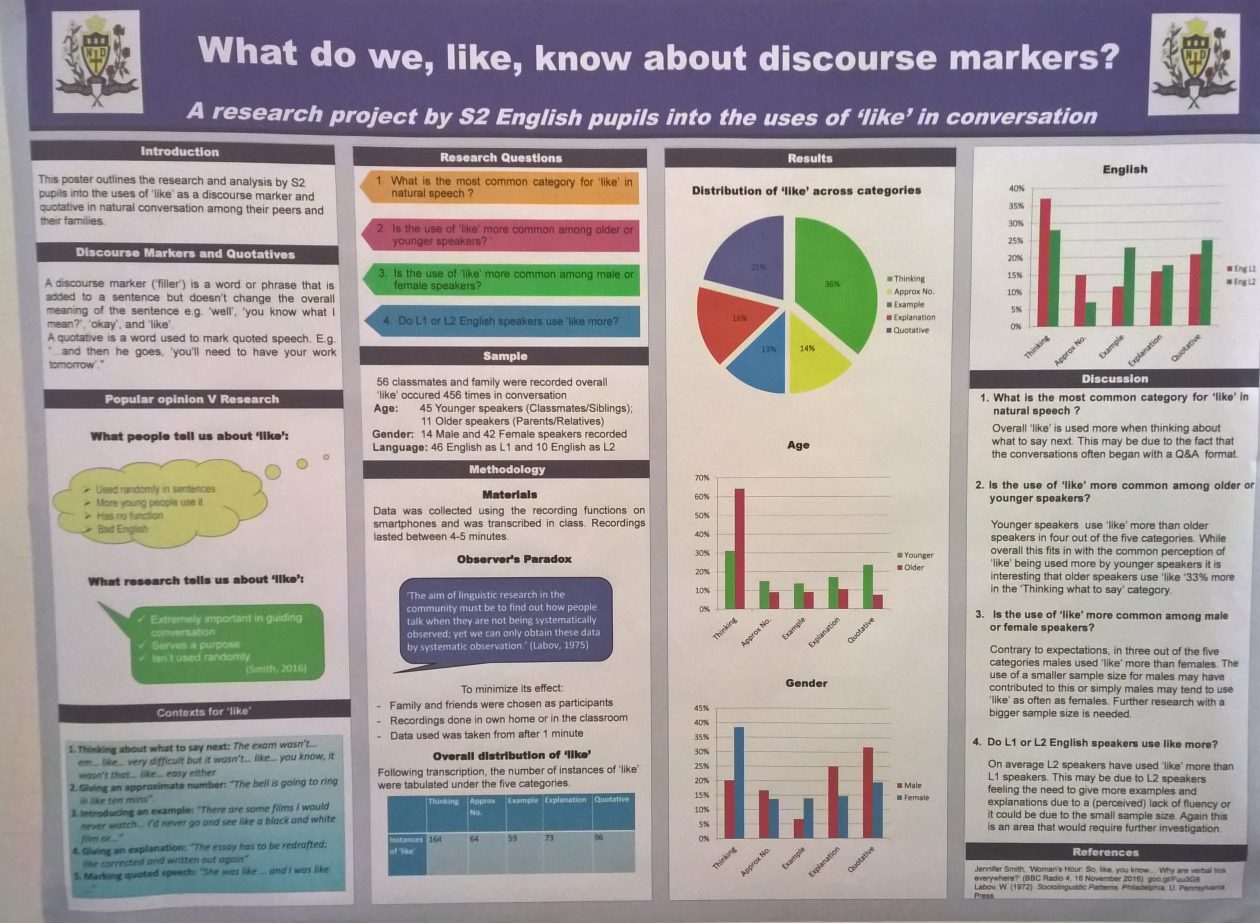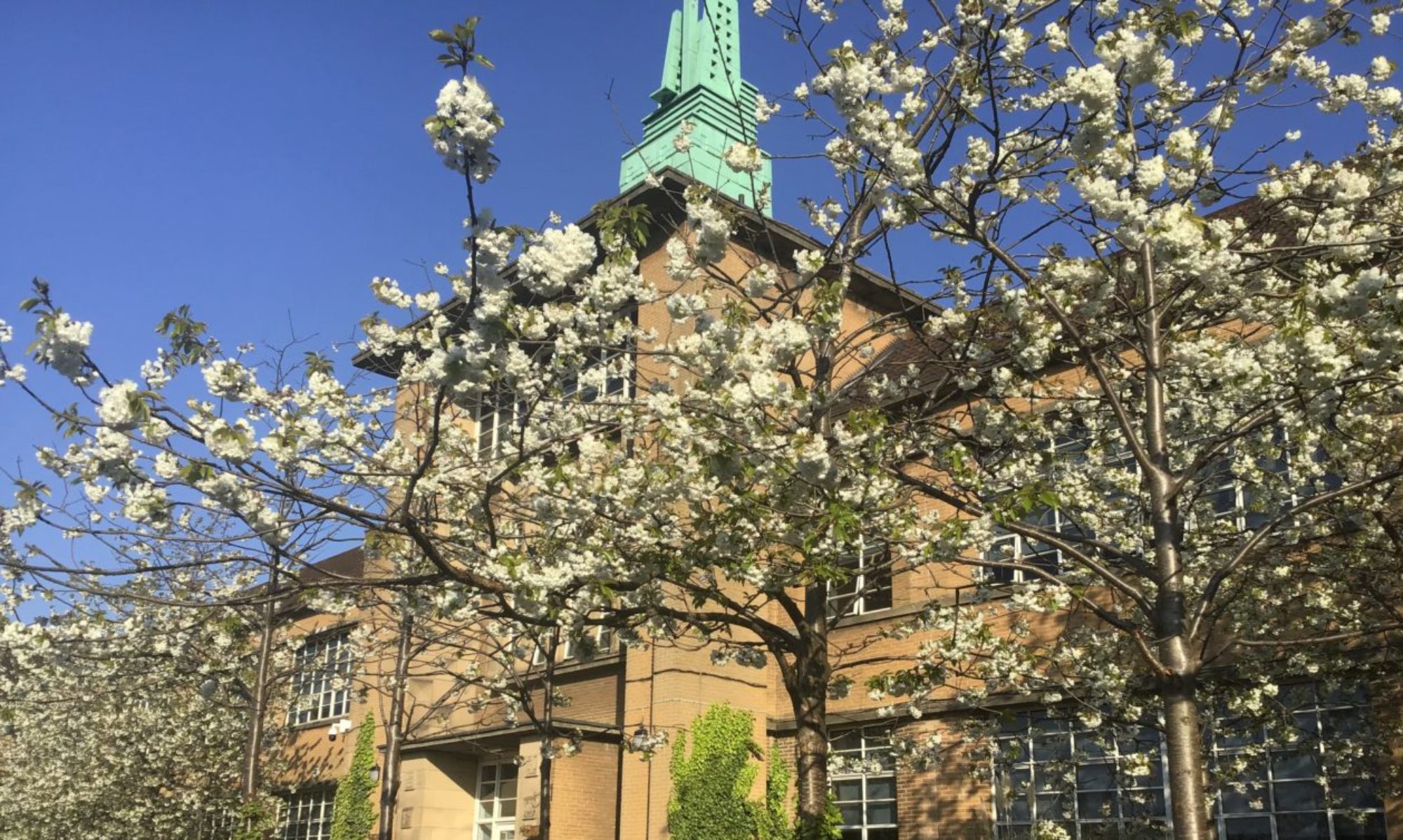In among the season of Halloween and on the back of learning about the supernatural and gothic elements in Coleridge’s and Poe’s writing, Mr McCarthy’s S1 class were recently treated to some spooky tales by Robert our jannie. In the great tradition of storytelling, Robert kept the class captivated, recounting eerie experiences and unexplainable occurrences that have taken place in Notre Dame down through the years outside of school hours. The setting of dark, empty corridors and classrooms certainly provide great stimulation for the imagination with Robert painting a very vivid picture of the strange goings-on when everyone has gone home.
S2 English Language Research
S2 pupils undertook a sociolinguistic project researching the use of ‘like’ as a discourse marker and a quotative in natural conversations.
A discourse marker (‘filler’) is a word or phrase that is added to a sentence but doesn’t change the overall meaning of the sentence e.g. ‘well’, ‘you know what I mean?’, ‘okay’, and ‘like’. A quotative is a word used to mark quoted speech. E.g. “…and then he was like, ‘you’ll need to have your work tomorrow’.
Before our research pupils felt – in line with common perception – that the discourse marker ‘like’ and the quotative ‘to be like’ were examples of ‘bad English’; pointing to the seemingly random nature of its use and its lack of an apparent function in conversation. Another common assumption was that it is used mainly by younger, female speakers.
S2 pupils gathered data from conversations, transcribing it and analysing it in order to answer these questions:
- What is the most common function of ‘like’?
- Do younger or older speakers use ‘like’ more?
- Do more males or females use ‘like’?
- Do native or non-native English speakers use ‘like’ more?
Pupils had the opportunity to develop their numeracy as well as research and enquiry-based skills throughout the learning process. The research was written up as individual dissertations and as a poster presentation.


